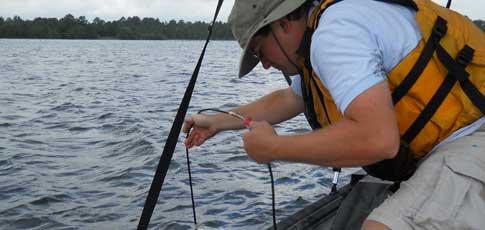Monitoring

AquAeTer has conducted water quality monitoring for a pulp and paper mill located in Valliant, Oklahoma as part of the Mill’s NPDES permit requirements. Four low-flow events were required. For each study, four stations were set up at specified locations over approximately 44 river miles on the Red River. Water quality was monitored at each station for one week. The sondes were retrieved and the data were analyzed. The final report was submitted to the regulatory agency at the end of the study. The study was initiated to validate the model developed as described in the following paragraph. The study ultimately determined that water quality standards were being met.
AquAeTer conducted a series of waste assimilative capacity dye time of travel studies from Valliant, Oklahoma to the Oklahoma-Arkansas stateline, from Ashdown, Arkansas to Fulton, Arkansas and from Fulton to Garland, Arkansas. Water samples for determining river deoxygenation rates for ultimate carbonaceous biochemical oxygen demand (CBODu), for organic nitrogen and for ammonia-nitrogen were developed from the samples collected with dye time of travel, water samples for chlorophyll analyses and algae identification were collected, and radiotracer reaeration measurements were made to accurately determine the reaeration rate in the River. The wasteload allocations developed from the data were used to establish monthly permit limits for the NPDES dischargers. Permits were subsequently obtained from the Oklahoma Department of Environmental Quality and ADEQ.
AquAeTer provided the following services to its client for this sampling and reporting project:
- Water quality measurements were made for water temperature, dissolved oxygen, pH and conductivity using global position system (GPS)
- Developed a predictive water quality model for the Red River
- Devloped a Total Maximum Daily Load (TMDL) for the Red River
- Determined River Rates, including deoxygenation by CBODu, hydrolysis of organic nitrogen, and nitrification of ammonia
- Reaeration rate was measured using radiotracers



